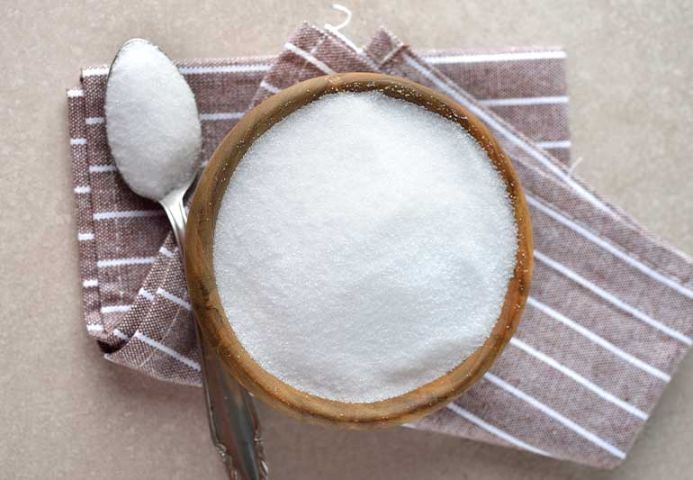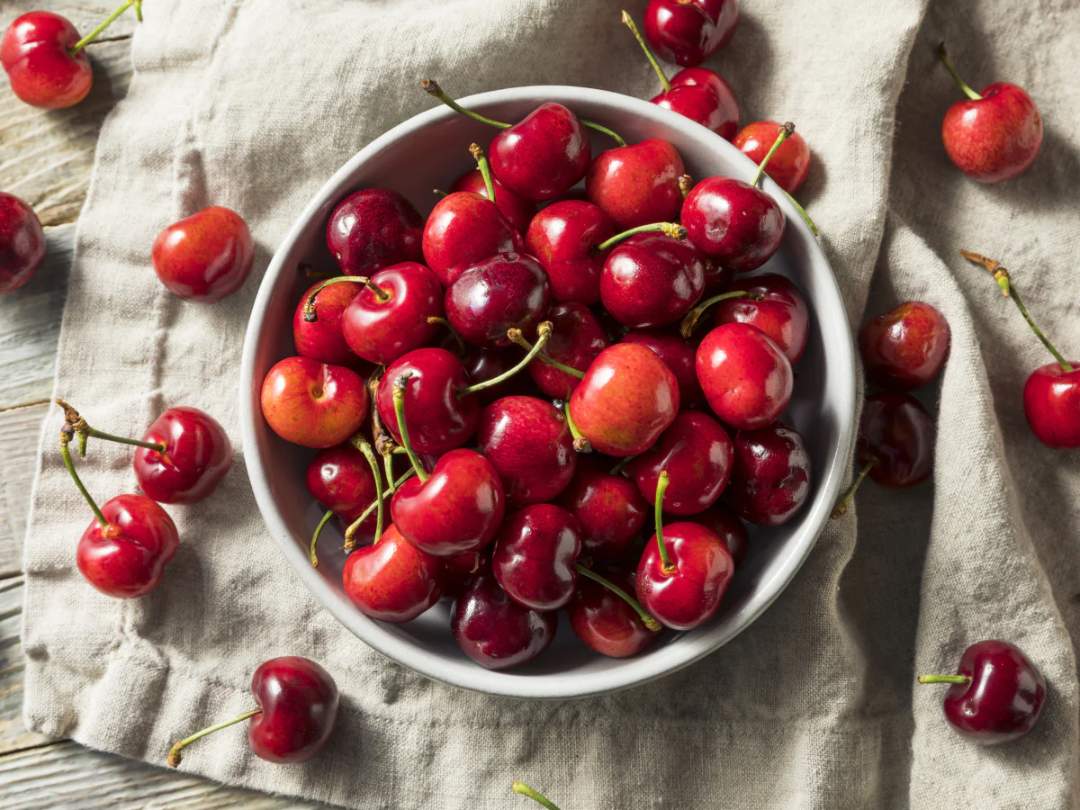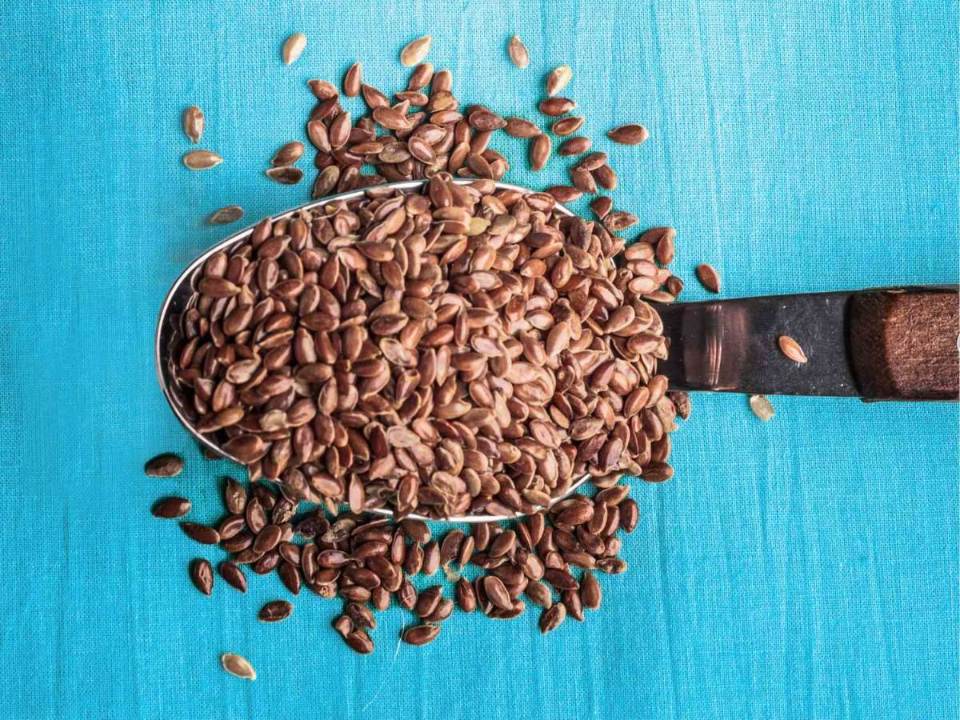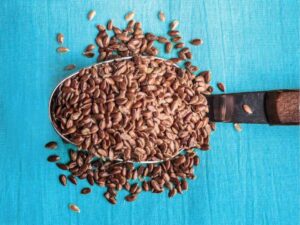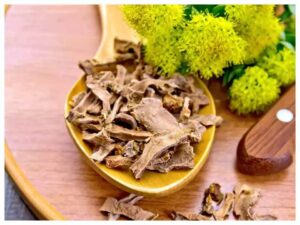What is Meshima mushroom
Meshima mushroom (Phellinus linteus) is known to have the strongest anti-cancer and immune-enhancing power among basidiomycetes.
It is also called woody mud mushroom, and the cap is 6 to 12 cm in diameter and 2 to 10 cm thick, and has various shapes such as semicircular shape, flat shape, round mountain shape, and horseshoe shape. On the surface, short, dense dark brown hairs grow, disappear as they grow, and become cuticles. It has blackish brown ring grooves, and the back is split horizontally and vertically. The edge is bright yellow, the bottom is yellowish brown, and the flesh is also yellowish brown. There is no stalk, and the spores are light yellowish brown and ball-shaped.
At first, it looks like a lump of mud, but after it grows up, it looks like it sticks out its tongue on a tree stump, so it is also called tree tongue. It is known to have excellent anti-cancer effects and is cultivated in large quantities in Korea as a valuable medicinal material. When boiled for medicinal use, it appears clear in yellow or light yellow, and is characterized by no taste and aroma. The taste is mild and light, so it is good to eat. It grows wild in Korea, Japan, Australia and North America.
Most of the Meshima mushrooms that grow on the stems of mulberry trees using yellow sulfur, and there were wild mushrooms collected from mulberry trees. However, currently, it is used as a product name, Meshima mushroom, as a generic name for the fungi of the genus Mud mushroom, rather than referring to a specific species.
In other words, the mud mushrooms grown on oak trees and the mud mushrooms grown on willow trees are Meshima mushroom. If Phellinus is written in the scientific name, it is a genus of mud mushroom, that is, a variety of Meshima mushroom. There are more than 200 species of Meshima mushroom worldwide. However, only three species have been recognized by FDA and registered as official breeds. In addition to eating the fruiting body of Phellinus, there are only three varieties that have been approved for processing as health functional food.
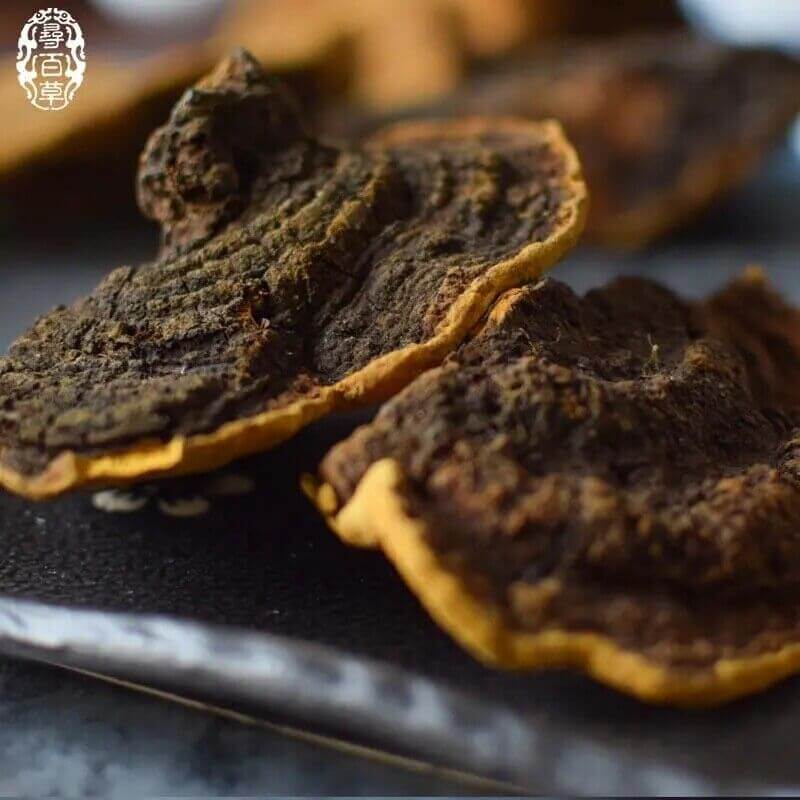
Real Meshima Mushroom or Fake One ?
There are many words related to Meshima mushrooms. Some argue that only P. linteus is a Meshima mushroom, while others claim that all mushrooms of over 200 species belonging to the genus Phellinus are Meshima mushrooms. In addition, there is also an argument that the longevity mud mushroom (Felinus baumii, P.baumii), which is currently cultivated a lot in Korea, is the same as the woody mud mushroom (P.linteus). It’s a complicated situation.
However, solving this problem is not so easy. Because, the name Meshima mushroom, which has been used for a long time in Korea and China, is not a taxonomic name, and the name is Meshima mushroom (mulberry mushroom), but mushrooms from trees other than mulberry trees are also called this name. In addition, Meshima mushrooms are not listed in the Mushroom Encyclopedia in Korea, so it is impossible to tell which one is the real Meshima mushroom. Also, P. linteus, which is widely known in relation to Meshima mushrooms, may actually be a mixture of several species, not just one species.
This problem boils down to two things.
- There are about 10 types of mushrooms belonging to the genus Phellinus, including woody mud mushrooms, horse manure mushrooms, longevity mud mushrooms, dried mud mushrooms, and black mud mushrooms. Are all these mushrooms Phellinus?
- Among the mushrooms belonging to the mud mushroom genus, are only the woody mud mushrooms (P.linteus) Meshima mushrooms?
The scientific name of fungi was reorganized through in-depth research at the International Mycology Society (IMC) level. And as a result, the scientific name of the Meshima mushroom has also changed. In place of the genus name ‘Phellinus’, which has been used so far, the genus name ‘Sanghuangporus’ has been introduced, and the species name ‘linteus’, which has been unclear to date, has disappeared, instead of the real Meshima mushroom. A new species name, ‘sanghuang’, has been created. The scientific name of this mushroom is Sanghuangporus sanghuang. For reference, the word ‘sanghuang’ used in this scientific name is a Chinese notation. The existing ‘woody mud mushroom (P.linteus)’, which was unclear which one it referred to, disappeared, and a species called ‘Sanghuangporus sanghuang’, which was embodied as a parasitic mushroom on wild mulberry trees, appeared. The existing ‘longevity mud mushroom (P.baumii)’ is materialized as a mushroom parasitic on wild sorghum peduncle and other broad-leaved trees.

What are 2-year-old, 3-year-old, and 4-year-old Phellinus mushrooms?
Like other common edible mushrooms, it forms spores and when the mycelium ages, it becomes soft due to self-digestion and eventually disappears. However, Meshima mushrooms, which are medicinal mushrooms and woody mushrooms, become hardened in a woody form rather than self-extinguishing.
We go through this process for 2, 3, and 4 years. Meshima mushrooms grow well in high temperature and high humidity environments such as those in Cambodia and Southeast Asia. In a country with four seasons, it can only grow for a few days or a few weeks in the summer during the year, so it takes about 3 to 4 years to reach the size of the artificially grown Meshima mushroom.
Because Meshima mushroom mycelium itself is weak, the environmental conditions in which Meshima mushrooms develop are difficult. Therefore, it reacts sensitively to the surrounding environment and dies when the temperature exceeds a certain temperature, and stops growing when the temperature is below a certain temperature.
This is why wild-caught Meshima mushrooms are prized.
Yellow indicates that the mycelium of Meshima mushroom is very active. When the environment changes, spores are formed, and the mycelium ages and turns into a dark brown woody form. Only the bottom is yellow, and the entire top is dark brown, and the woody form can be seen as an aging mycelium.
Meshima mushroom Core Ingredients and Efficacy
About β-Glucan
Why do we eat Meshima mushrooms?
Beta glucan is said to be rich in antioxidants, but how does it work in our body?
And is the Meshima mushroom we eat really working properly in the body?
Beta-glucan is a glucose polysaccharide with an immune-enhancing action, and has a basic structure of β-Glucoside beta-glucoside bond at -1,3-position, and its structure and physical and chemical properties vary depending on the bonded position.
Beta glucan is divided into several types. It depends on the action of vegetable beta-glucans and mushroom and yeast beta-glucans. From above, it can be divided into immune system action, constitutional improvement action, heart function action, and other actions, and beta-glucans of barley, oat, mushroom, and yeast work differently. .
Best of all, yeast-derived beta-glucan is the most effective. It is said to be 40 times higher than that of plants and fungi. The important thing is that vegetable beta-glucan is effective in improving the constitution, but it does not have an effect on improving immunity, which is the main purpose of beta-glucan consumption.
In order to see the immune system action, you should take beta glucan extracted from mushrooms and yeast. Except for grains, which are vegetable beta-glucans, all of them can help the immune system function. In other words, even in places such as oat, barley, and wheat, which are actually vegetable, beta-glucan is contained in a large amount, but it does not act as a primary immune system.
Why do you eat beta glucan?
How much beta-glucan content do you eat to increase immunity and have anti-cancer effects?
To sum up, you will find that you don’t have to eat products with high content.
Ingesting the fungus/yeast beta-glucan discussed above does not immediately work on the body. In addition to chemical structural changes, complex mechanisms occur in the body to strengthen immunity and prevent malignant tumors.
This process goes like this:
- Intake of fungi/yeast beta-glucan
- Selective absorption of water-soluble beta-glucan in the payer’s patch at the end of the small intestine in the body
- Accepted beta-glucan activates macrophages (M cell-macrophages)
- cytokine activation
- NK cell activation and proliferation and cytotoxin T lymphocyte activation and proliferation
Beta glucan extracted from fungi and yeast is consumed, and it is more efficient to consume it as an extract rather than the raw material.
As another example, it is better to eat shiitake mushrooms by slicing them rather than raw, and it is most certain to eat them by extracting them with hot water. Just because you ingest beta glucan does not mean that it is absorbed by your body. In order to see the immune system effect due to beta-glucan, there are several absorption conditions in the body, and they are as follows.
- It must be ultra-miniaturized to 1㎛ or less, and it will not work unless it is ultra-miniaturized.
- Even if it is absorbed, it needs to be ultra-miniaturized to 1~2㎛ to activate macrophage, and at this time, macrophages selectively absorb only beta-glucan of the corresponding size.
- It must be in the form of water-soluble microparticles.
In the end, it is most efficient to consume it as an extract rather than ingesting the raw material.
Absorbed beta glucan binds to macrophages, stimulates macrophages, and increases the ability of macrophages to destroy malignant tumors (microorganisms, infected cells).
Activated cytokines stimulate cells related to immune response, such as NK cells and T lymphocytes, to activate and proliferate. At this time, it is reported that each cell has a receptor called CR3 to recognize beta glucan. These activated cells directly or indirectly remove and suppress invading microorganisms, infected cells, and malignant tumors through attack and phagocytosis.
Beta glucan only serves as a switch to stimulate cells directly involved in anticancer and immunity.
Then, if you eat a lot, wouldn’t it be possible to see the effect of strengthening the immune system due to the activation of macrophages more actively?
Beta glucan has no side effects, but when macrophages are activated, an immune response and an inflammatory response occur together. In other words, the daily intake is fixed, so even if you take an appropriate amount or even a small amount, you can see the anti-cancer effect and immune system strengthening effect through the role of switch. A daily intake of 2 to 3 g is considered sufficient to manage health even if it is consumed in an appropriate amount. The more you consume beta-glucan, the better the effect, and if there are no side effects, I don’t think there’s any reason to set a daily intake. Since each person and frequently has the above symptoms, the daily intake is set, and there is no reason to overdose.
Humans do not have enzymes that can break down beta-glucan. Depending on the size of beta-glucan, it is selectively absorbed in the small intestine and acts as a biologically active substance for stimulating cells of the immune system, or just serves as a general dietary fiber and is excreted.
Therefore, the probability of being discharged when ingested in raw, powder, or powder form increases. Although there are high-content products such as vitamins and biotin, the unit price of the product is high and it is also thought that it is good to consume the right amount because everything except what is absorbed into the body is discharged. The key to checking when ingesting beta-glucan is that it should be in the form of ultrafine particles of 1-2㎛ in size. You need to check how the product is made rather than the content
Antioxidants such as beta-glucan, polyphenols, and hispidin are difficult to extract with maximum efficiency using conventional methods. During extraction, the chain is broken or destroyed, or the yield is not good. Even if the ingredients are high due to the difference in years of cultivation, the extraction yield is low, and even if you consume it, you do not have to pay a high price if you see that it is expelled from the body without being absorbed by the body like vitamins.
What is Good Meshima mushroom
White rot is caused inside the tree species with Phellinus, and cellulose and lignin are decomposed to obtain nutrients and form a fruiting body. In the case of mulberry trees, decomposition is generally slower than oak trees, and as a result, problems arise in forming and growing Meshima mushroom fruiting bodies. In the case of oak trees, mycelium is a good species to decompose, so most oak trees are used except for certain mushrooms. In addition, since there are far more oak trees that grow naturally in Korea, it is natural to cultivate and grow on oak trees rather than mulberry trees in terms of industrial aspects such as easy to obtain, stable supply and price.
It is not that the mulberry Meshima mushroom has better or special effects, and it is precious because it is a difficult environment for mushrooms to grow due to the difference in species, but there is no further difference. That’s why you don’t have to buy and consume mulberry mushroom at an expensive price.
The shape of Meshima mushroom is very diverse, such as a horseshoe shape, a shape rising like a round mountain, and a flat shape. It is usually dark brown in color and at first looks like a lump of kneaded yellow clay. After fully grown, it is attached to the tree like a tongue sticking out, so it is also called a tree tongue. It is a perennial mushroom whose yellow part turns to mud color in winter and grows yellow in spring. It is a good Meshima mushroom that has a hard texture when touched and has been grown for more than 2 years and has no residue even after being washed several times.
Benefits of Taking Meshima mushroom
Meshima mushroom is very famous as an anti-cancer mushroom. Growing on old old trees such as mulberry trees and various broad-leaved and coniferous trees, Meshima Mushroom is a perennial mushroom. Meshima mushroom has been a rare and highly valued mushroom since ancient times, and it is called the herb of immortality. Phellinus is a mushroom that has anti-cancer effects and enhances immune function. If it is suitable for the constitution, there are almost no side effects, and it is known to be effective against cancer of the digestive system and liver cancer. Let’s find out what other benefits of Meshima mushrooms are.
Excellent anti-cancer effect and immune function improvement
Meshima mushroom is very rich in beta-glucan, which has anti-cancer effects that inhibit the growth of cancer cells. Beta-glucan activates nk cells, which are immune cells, suppresses the proliferation and recurrence of cancer, and improves immune function to prevent side effects that may occur during chemotherapy. In addition, it is involved in blood vessel health by improving blood sugar cholesterol lipid metabolism by improving inflammation in blood vessels.
Prevention of diabetes and diabetic complications
Phellinus linteus has the effect of strengthening blood pressure and promoting insulin secretion, preventing diabetes and complications. It reduces the risk of heart disease by lowering the level of low-density cholesterol (LDL) in blood vessels, and also plays a role in preventing modern metabolic syndrome, such as high blood pressure, arteriosclerosis, and hyperlipidemia.
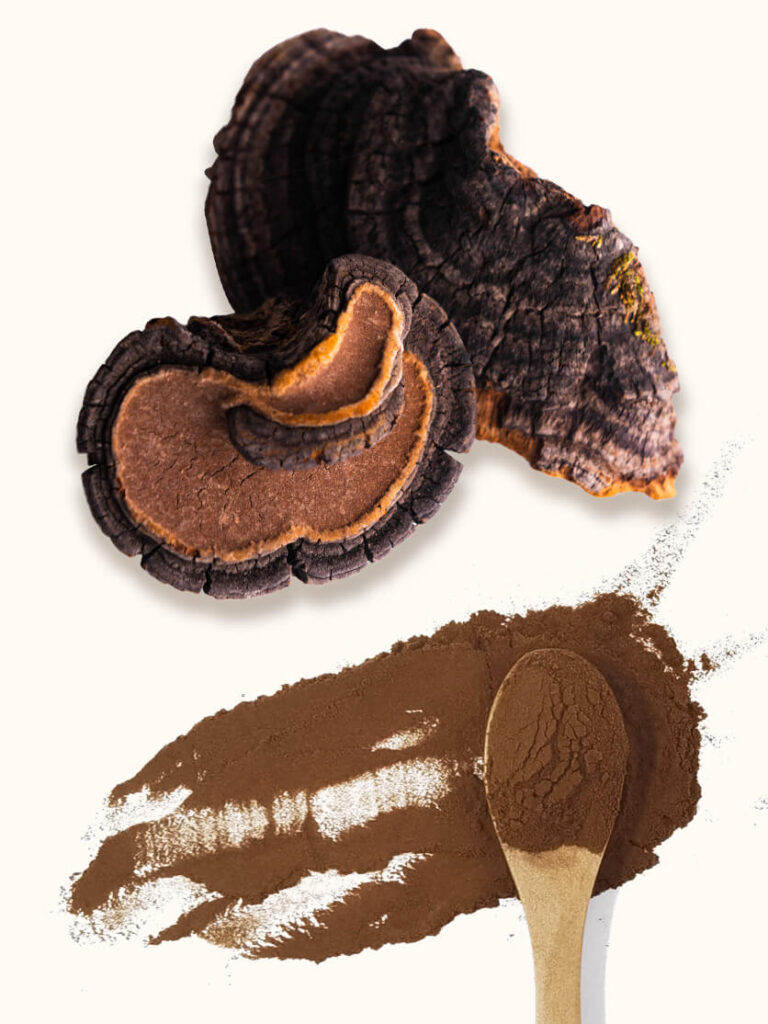
How to Take Meshima mushroom
Phellinus mushrooms are usually powdered or boiled. It is better to boil it to reduce the loss of anti-cancer ingredients. It’s good to drink a little bit steadily, but if you drink a lot at once, various side effects may occur. Commonly known side effects include vomiting, headache, dizziness, and diarrhea, and in severe cases, there are reports that you may get a toxic infection, so be careful. Also, as with the nature of most mushrooms, those with a cold body, those with a cold stomach, and those with a cold tolerance should be careful. On the contrary, it is good for those who have a lot of heat in the body.
How to eat Phellinus mushrooms
- Crush them first.
- Add 30g of crushed Phellinus mushrooms to 2L of water and boil.
- When it boils, reduce the heat and simmer until the water is reduced to 1/3 to 1/2.
- Repeat the above process several times (5 to 10 times) to brew, mix and drink.
- It is recommended to store the brewed water in the refrigerator.
Potential Side Effects of Meshima Mushroom
While Meshima mushroom is considered safe for most people, consuming it in large amounts or for an extended period of time can result in some negative side effects. Some of the potential side effects of Meshima mushroom include:
Digestive Issues
Meshima mushroom can cause digestive issues such as bloating, gas, and constipation. People who have a sensitive stomach or digestive problems may experience these symptoms more frequently.
Allergic Reactions
Some people may be allergic to Meshima mushroom, which can result in symptoms such as itching, hives, difficulty breathing, and even anaphylaxis. If you have a history of allergies, it is important to talk to your doctor before taking Meshima mushroom.
Interactions with Medications
Meshima mushroom may interact with certain medications, such as blood thinners, immunosuppressants, and chemotherapy drugs. This can increase the risk of bleeding or decrease the effectiveness of the medications. If you are taking any medications, it is important to talk to your doctor before taking Meshima mushroom.
Reduced Iron Absorption
Meshima mushroom contains compounds that can reduce the absorption of iron in the body. If you have an iron deficiency or are at risk for anemia, it is important to talk to your doctor before taking Meshima mushroom.
When to Avoid Taking Meshima Mushroom
In addition to the potential side effects, there are some situations when it is recommended to avoid taking Meshima mushroom. These include:
Pregnancy and Breastfeeding
Meshima mushroom has not been studied in pregnant women, so it is recommended to avoid taking it during pregnancy. Similarly, it is not known if Meshima mushroom is safe for breastfeeding mothers, so it is best to avoid taking it while breastfeeding.
Children
Meshima mushroom has not been studied in children, so it is not recommended for them to take it.
Liver or Kidney Disease
Meshima mushroom can be hard on the liver and kidneys, so it is not recommended for people with liver or kidney disease to take it.
Autoimmune Diseases
Meshima mushroom may stimulate the immune system, which can be harmful for people with autoimmune diseases. If you have an autoimmune disease, it is important to talk to your doctor before taking Meshima mushroom.
In conclusion, Meshima mushroom is a medicinal mushroom that has many potential health benefits, but it is important to be aware of its potential side effects and when to avoid taking it. If you have any concerns about taking Meshima mushroom, it is best to talk to your doctor before starting to take it.

